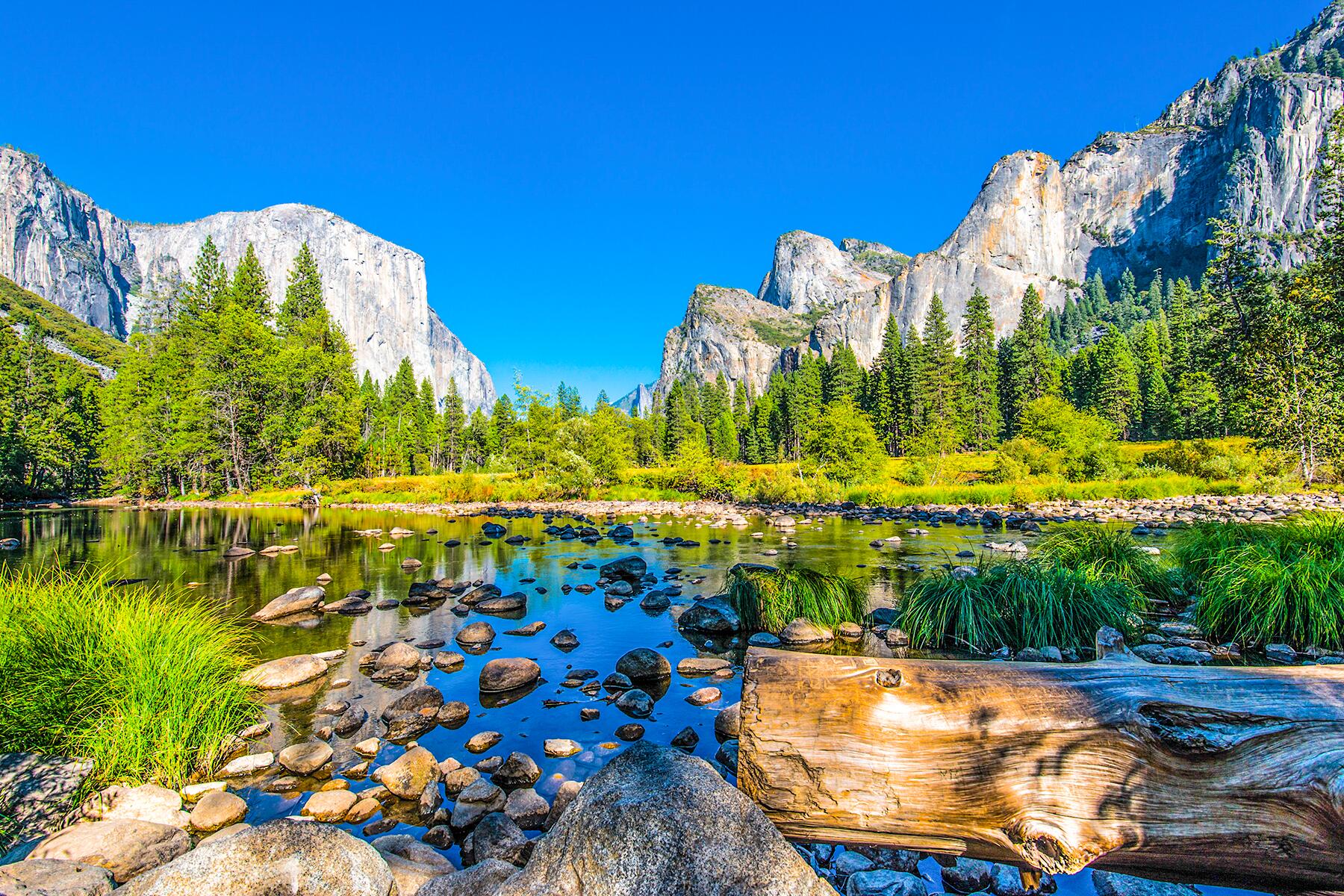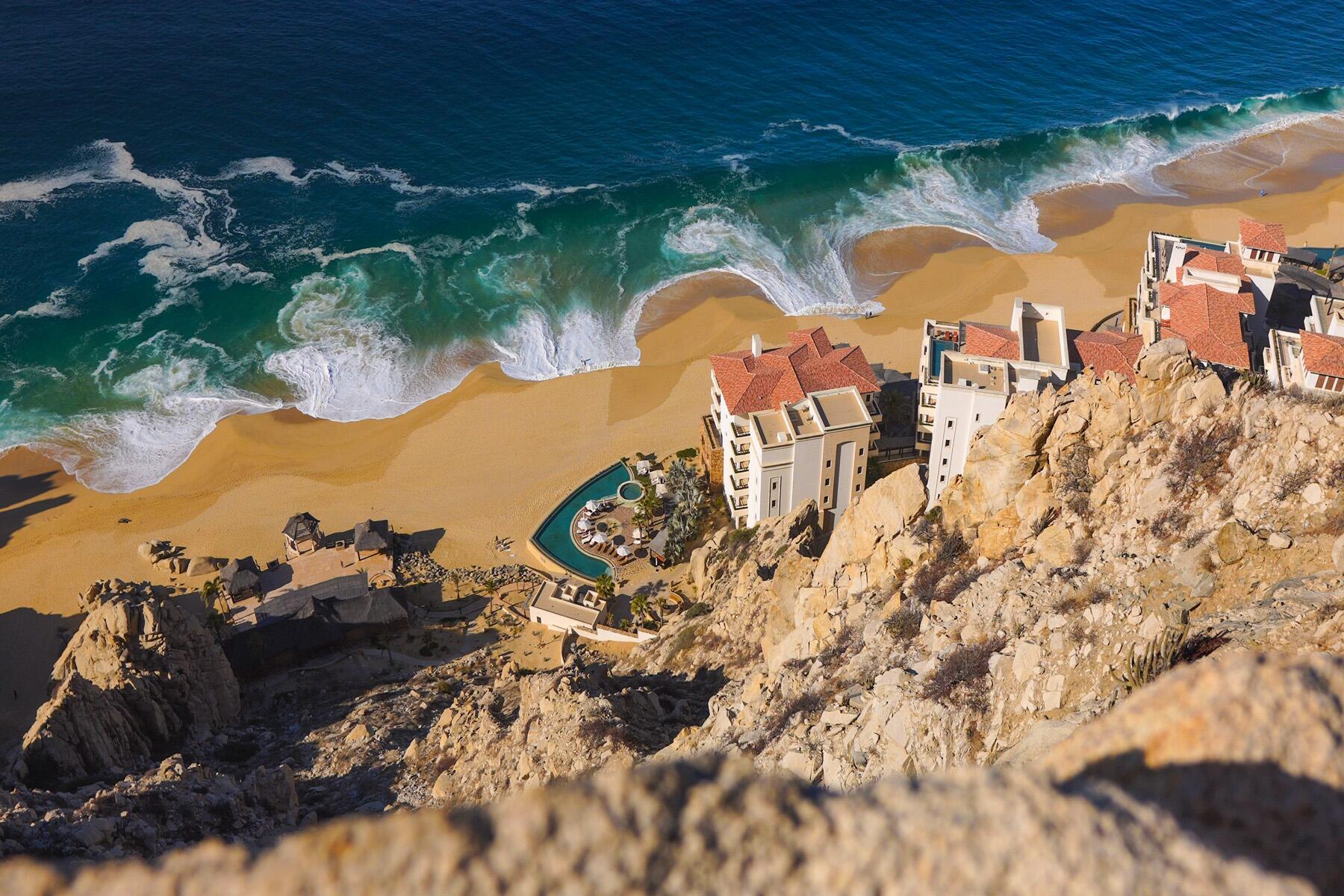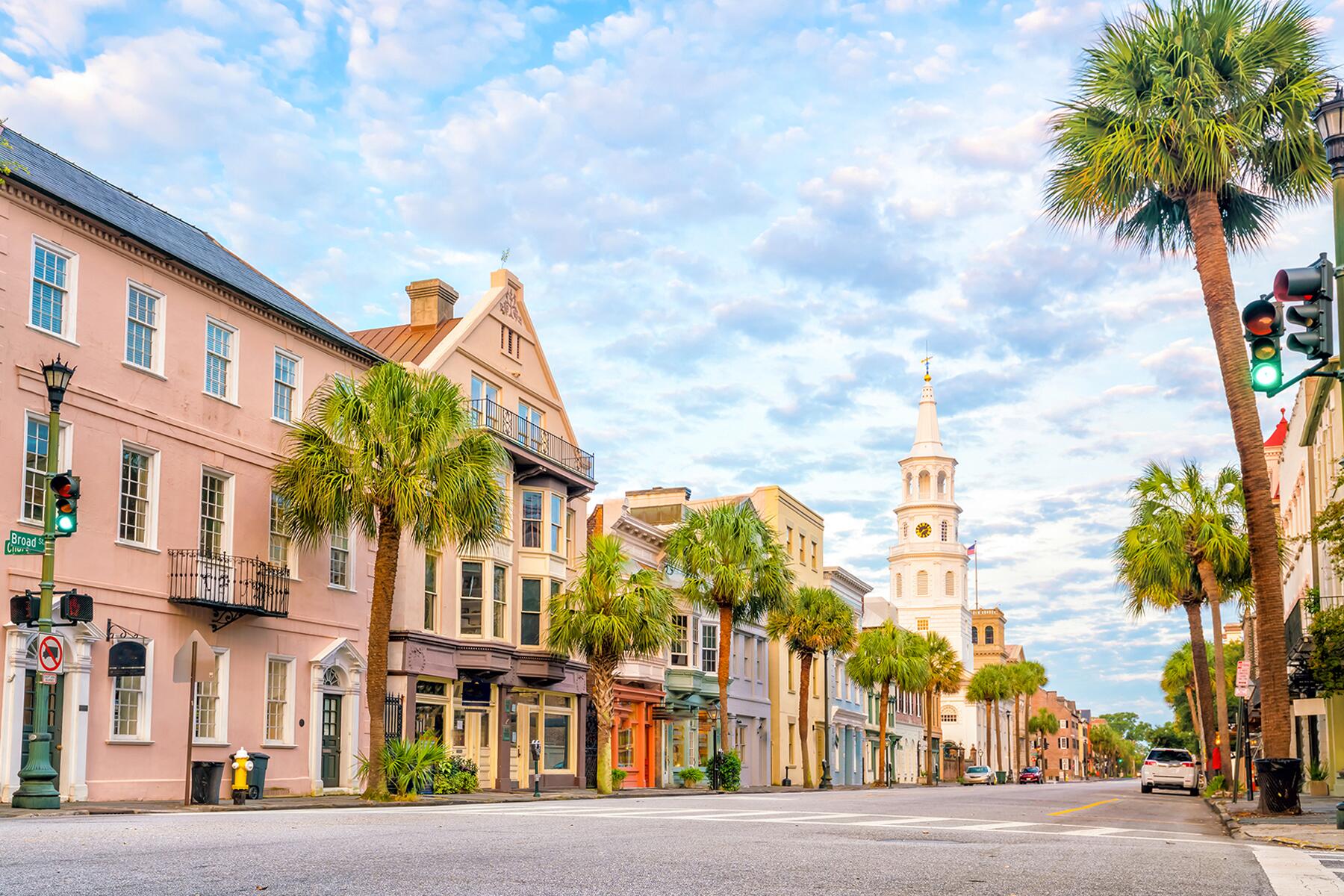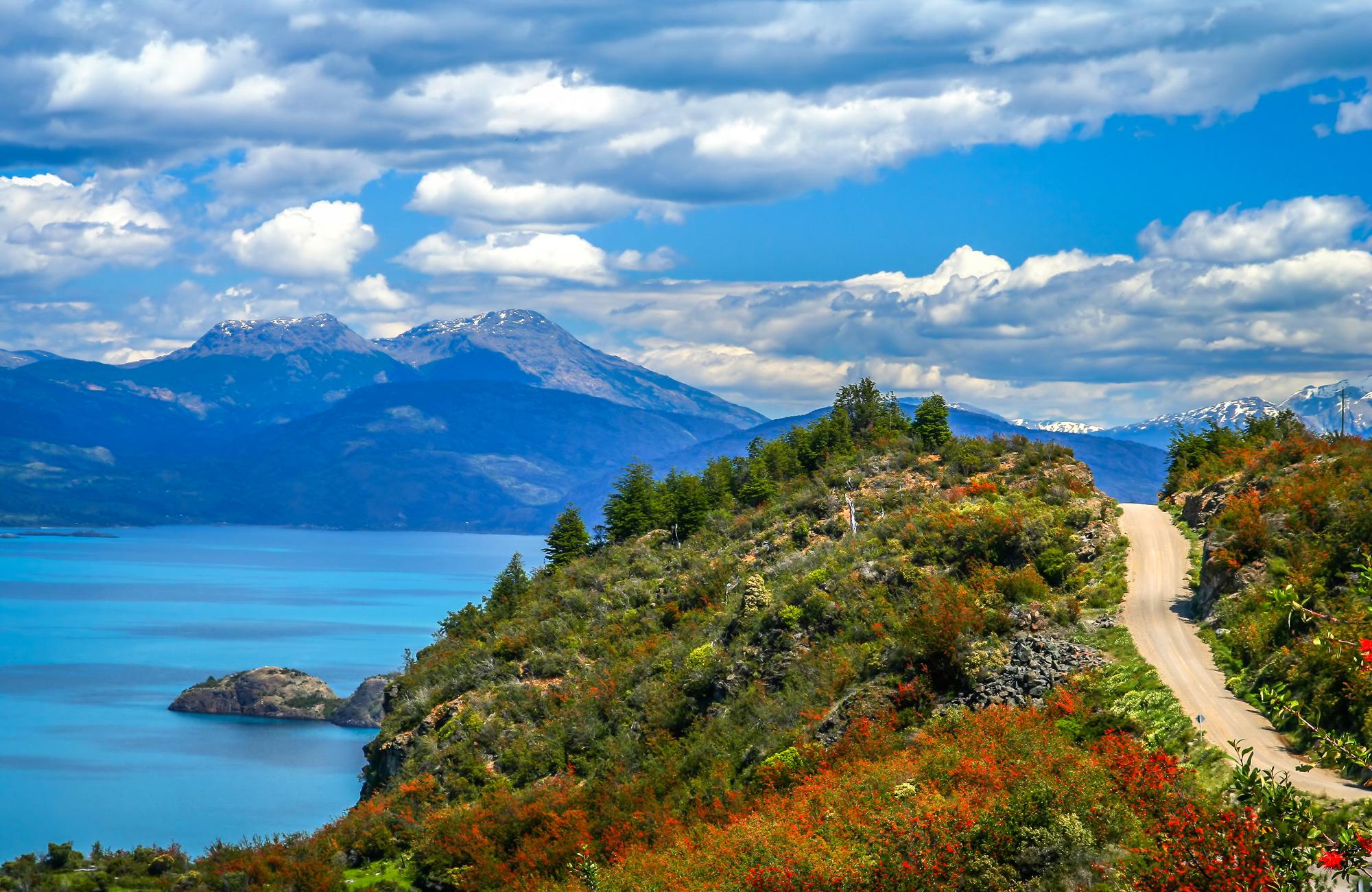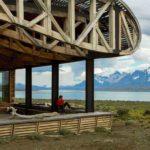How to road trip from Santiago, Chile to Ushuaia, Argentina.
With a square area of over 400,000 miles, Patagonia region is best explored with a good old-fashioned road trip. With expansive deserts, timeless glaciers, and rugged mountains, Patagonia is truly one of the wildest landscapes in the world.
You can begin your trip by flying into Santiago, Chile. Pick up your car there (a camper or 4-wheel drive), and journey along the rugged Pacific coast and through Chile’s luscious lake district. Once in Patagonia, explore the red deserts and climb the icy peaks all while taking your time to soak up the wild.
Top Picks for You
Valparaíso
For funky street art, eclectic shops, and romantic views of clifftop homes, spend a day strolling—or rather climbing—the streets of Valparaíso, Chile. A port city just 70 miles west of Santiago, Valpo (as the locals call it) is best experienced up high. Ride the ascensores (wooden funiculars) to experience the city’s best views, and explore the shops and eateries hiding in the tight alleyways. Quaint wine bars and cozy cafes are a pleasant respite for an afternoon drink. Make time for a visit to J Cruz M for live folk music and Chorillana (french fries smothered in egg, minced pork, and onion). Old photos and antiques decorate this 1972 dive bar, and you can find the shabby entrance at the end of a graffiti-stained alley.
Pucón and the Chilean Coast
From Valparaíso, the rugged Chilean coastline is a scenic drive, and sleepy beach towns are scattered all along the Pacific sea. Make a pit stop for fresh ceviche in Navidad, and check out the killer swells in Pichilemu—home of Chile’s best surf. Once in Concepción, drive east towards Chile’s Lake District. Pucón, Chile lies southeast of the coast—approximately 90 miles inland. A small lake town set against Volcano Villarrica, it’s an adventure pitstop known for its water sports, hot springs, hiking trails, and horseback riding.
INSIDER TIPDon’t miss the artisan market, Feria Artesanal, for local, handcrafted goods.
Recommended Fodor’s Video
Puerto Varas
Two hundred miles south of Pucón along a stunning road, Puerto Varas is an adventure town in Chile’s Lake District in the shadow of Chile’s most active volcano: Volcano Osorno.
Visit Petrohue Waterfalls for emerald rapids and fantastic photo-ops of the 8,701-foot volcano tucked behind the falls. Vicente Pérez Rosales National Park—Chile’s oldest park established in 1926—is the perfect spot to stretch your legs from the long drive. Aside from Osorno, the park is home to Volcano Tronador and Volcano Puntiagudo, as well as hot springs and numerous nature walks.
INSIDER TIPBack in Puerto Varas, don’t miss the food trucks and live music along the shores of Llanquihue Lake.
Pumalín Park
Pumalín Park, also located in Puerto Varas, Chile, was established by the late Doug Tompkins, founder of The North Face. The park is one of South America’s largest conservation efforts and covers 715,000 acres. Camping, hiking, climbing, kayaking, and leisurely nature walks are all popular activities in Pumalín. The Mirador Trail is an easy one-mile ascent and offers a breathtaking view of the El Amarillo Valley.
Bariloche
The first stop in Argentina, San Carlos de Bariloche is 200 miles from Puerto Varas and commonly referred to as the “rooftop of Patagonia.”
If you’ve been itching to pitch a tent, now is your chance. Gear up for an easy, 6-mile trek to Refugio Frey—a cozy cabin built on the shores of Toncek Lagoon, where homemade beer and empanadas await. Unless you plan on hiking 12 miles in one day, prepare to sleep at the refugio. Reservations are required though, so make sure email or call ahead. For a longer and more challenging trek, continue to Refugio Jakob (5.5 miles from Refugio Frey).
El Bolsón and the Carretera Austral
A short drive from Bariloche, El Bolsón is one of northern Patagonia’s best-kept secrets. A quiet mountain town that rests along the Río Azul, it’s known for its local beer, endless hop fields, and homemade ice cream.
Once you’ve tired of small-town charm (don’t stay too long or you might never leave), continue the journey south, back across the Argentina/Chile border. From here, simply follow the famous Carretera Austral (Route 7). Camping and exploring the magical forests along the way is obligatory.
El Bolsón has some of the most underrated multi-day treks in Patagonia. Spend two to three days in the area hiking the trails and sleeping at one of the thirteen refugios along the main trekking circuit.
Marble Caves
Back in Chile, Lake General Carrera’s Marble Caves are situated near the end of the Carretera Austral. This expansive chain of 6,000-year-old caves is only accessible by small motorboat or kayak, so enjoy the day floating on emerald waters and observing one of nature’s most impressive creations.
INSIDER TIPArrive in Puerto Rio Tranquilo (the launching point for most tours) during the early afternoon to book your spot for the following morning. And bring rain gear—a choppy boat ride across the cold waters of Lake General Carrera is sure to leave you soaked.
Chile Chico
Chile Chico—a small, desolate town with very few shops or houses—sits on the southern shores of Lake General Carrera. Spend an afternoon walking the ghost town or riding horseback along the lake’s shoreline. Take in one last look of the Chilean wild before crossing back over the border and into Argentina.
INSIDER TIPStock up on snacks for the long drive on Ruta 40. Don’t buy produce though—you may be asked to throw it out when crossing the border into Argentina.
Ruta 40
This far south in Patagonia, there is only one main highway: Ruta 40. Dry, dusty, and riddled with potholes, it’s a shocking change of scenery from the Carretera Austral and Chile’s luscious lake district.
An expansive desert, Ruta 40 is perfect for stargazing and camping in the wild. Keep a lookout for guanacos (South America’s native camelid species); they often travel in packs and can sometimes venture into the road.
Check with local authorities about potential gas strikes before leaving Chile Chico. With only a few gas stations along the route and 400 miles until El Chaltén, it’s crucial to ensure trucks are running deliveries as usual.
El Chaltén
A hard to reach, dusty village with spotty wifi and little vegetation, there is only one reason to make the journey to El Chaltén, Argentina: Fitz Roy. Jagged and famous for its climbing, the 11,000-foot mountain is a symbol of Patagonia.
Fitz Roy is best experienced at sunrise—and without the crowds. Park your car and wild camp alongside RP23 for front row seats to the morning show, and then head into town to conquer a day hike or tackle a multi-day circuit.
INSIDER TIPWatch for rock climbers attempting to summit the mountain. It’s one of the most challenging climbs in the world and only a handful of climbers, if any, reach the summit each year.
Torres del Paine
Two hundred and fifty miles south of El Chaltén, Torres del Paine is the adventure capital of Patagonia and is most notable for its glaciers, ice fields, and shimmering lakes. Many travelers visit this national park to hike the famous W or O Circuit—long, strenuous treks that can take upwards of 10 days to complete and end with a climb to Cordillera Paine—the famous jagged peaks.
Another notable stop in the park is Glacier Grey—a 17-mile ice field. For day trips, you can take a boat or join a kayak tour. For the adventure junkies, grab your crampons and join a trekking group to hike on top of the glacier.
INSIDER TIPIf you have the time, the park and Glacier Grey are best experienced via the circuit. Pack a tent though; the refugios are both crowded and expensive.
Ushuaia
The farthest-most city in South America, Ushuaia is a port town with a rich history. It’s also where you can get your passport stamped for visiting the “End of the World” (stamps are given inside the Tourist Information Center).
Aside from strolling the historic streets and visiting the Museo del Fin del Mundo—a museum with artifacts from the first expeditions and explorers—take a day trip to Estancia Harberton and the Penguin Rookery. You will have to book with a tour group in town, but it’s worth the hassle to visit the island inhabited by native penguins. Here, you can walk among the colonies and observe the birds in their home.
Fancy a craft beer at the end of the world? Visit Garibaldi Cerveza Artesanal. Just a short drive outside of Ushuaia, this craft brewery serves delicious pints of local beer.
Tierra del Fuego National Park
Tierra del Fuego is a dramatic and wild landscape, just outside Ushuaia, Argentina. A national park with endless bogs, fiery grasslands, and thick forests, it is no wonder the park’s name means the “Land of Fire.”
Spend the final days of your Patagonian adventure exploring Tierra del Fuego and camping beneath the forest canopy. With endless trails and fantastic landscape, it’s easy to lose yourself in this part of the world.

